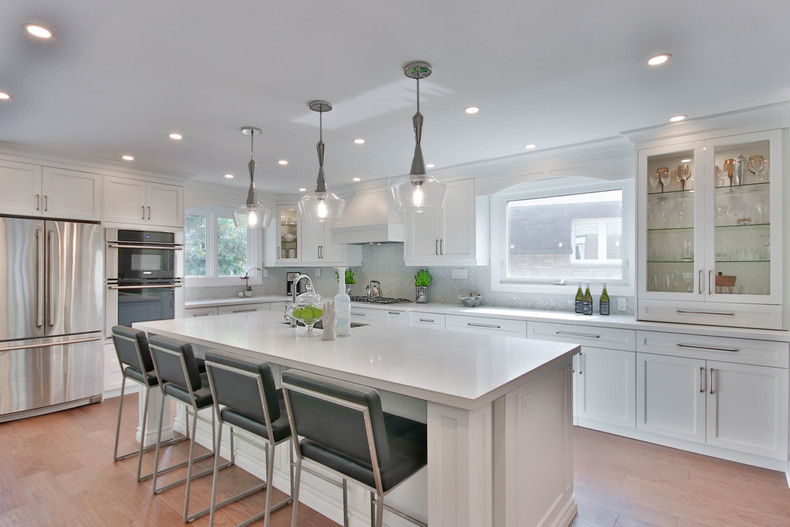Upgrade Your Kitchen's Aesthetic with Costs Legs For Kitchen Island
Upgrade Your Kitchen's Aesthetic with Costs Legs For Kitchen Island
Blog Article
A Guide to Selecting the Perfect Legs For Cooking Area Island for Your Home
Choosing the optimal legs for your cooking area island is a nuanced choice that influences both the functionality and visual allure of this central room. Variables such as elevation, products, and design play a critical role in balancing your island with the overall kitchen area style. Furthermore, recognizing the importance of stability and maintenance can dramatically affect your choice. As you consider these elements, it becomes obvious that the best legs can change not just the appearance of your cooking area yet likewise its use for many years to come. What details features should you focus on in this selection procedure?

Recognizing Kitchen Island Legs
When selecting legs for a cooking area island, it's important to understand their visual and practical roles in the general style. The legs work as a vital support system, making certain security and longevity for the island, which usually operates as an office, eating area, or gathering place. As a result, the selection of material and building and construction method have to be robust sufficient to hold up against day-to-day use and possible wear.
Along with their architectural responsibilities, legs add dramatically to the island's visual charm. They can boost the kitchen's style, whether through traditional, contemporary, or eclectic styles. The height and percentage of the legs are also important factors to consider; they must integrate with the island's countertop height while making sure comfy seating for those making use of the room.
In addition, the leg design can affect the general flow of the kitchen. Open, ventilated leg styles can develop a sense of lightness, while strong, considerable legs may communicate a more based and secure visual - Legs For Kitchen Island. Recognizing these useful and visual facets will lead property owners in making informed options that match their kitchen area's design and improve its use
Popular Styles and Products
The choice of legs for a cooking area island encompasses a selection of prominent styles and materials, each offering distinct characteristics that can enhance both capability and aesthetics. Among one of the most sought-after styles are contemporary, rustic, and conventional. Contemporary legs frequently include sleek, minimalist designs that highlight simplicity and clean lines, making them optimal for modern cooking areas. Rustic designs, on the various other hand, welcome natural environments and often showcase recovered wood or distressed coatings, adding heat and beauty to the space. Standard legs normally exhibit ornate information and craftsmanship, boosting traditional cooking area styles.

Elevation and Stability Factors To Consider

Stability is another crucial consideration. The legs of important source the kitchen island ought to give sufficient assistance, making sure that the structure can endure everyday usage without moving or tottering. Product option plays a significant function in stability; steel legs, for circumstances, often tend to offer higher toughness contrasted to timber. Additionally, making certain that the island is firmly anchored to the floor or wall surface can improve stability, particularly for larger islands that might birth significant weight.
Matching Your Kitchen Area Aesthetic
Selecting the best legs for your kitchen area island goes beyond capability; it likewise plays a substantial function in the total aesthetic of the space (Legs For Kitchen Island). When picking see here now legs, consider the design style of your kitchen.
Color is one more crucial aspect. Legs that enhance or comparison with your island's surface and surrounding kitchen cabinetry can produce aesthetic consistency or striking focal points. Coupling dark timber legs with a light marble kitchen counter can include depth and rate of interest. In addition, take into consideration the surface of the legs; matte, glossy, or textured coatings can significantly impact the total feeling of the kitchen.
Installation and Maintenance Tips
Mounting kitchen area island legs requires cautious interest to detail to ensure both security and visual charm. Use a stud finder to locate wall studs if you are connecting the legs to a wall surface or utilizing braces for included assistance.
When protecting the legs, use high-quality screws and, if necessary, wood adhesive for extra stamina. For steel legs, guarantee that you are using proper anchors and tools to avoid damage to your floor covering. It is advisable to look for levelness after installation, making modifications as required to prevent wobbling.
Maintenance is just as crucial for long life - Legs For Kitchen Island. Routinely inspect the legs for any signs of wear or loosening, particularly in high-traffic locations. Clean the legs with an ideal cleaner, staying clear of rough materials that might scratch the surface. For wooden legs, consider using a wood conditioner occasionally to keep their finish. By following these installment and maintenance tips, you can ensure that your cooking area island legs continue to be both practical and visually enticing.
Verdict
In conclusion, choosing the ideal legs for a cooking area island requires cautious factor to consider of height, security, and aesthetic compatibility. Inevitably, thoughtful leg choice plays an essential role in raising both the practicality and design of the cooking area area.
When choosing legs for a kitchen island, it's crucial to understand their visual and functional functions in the general style. Open, airy leg more styles can produce a sense of agility, while strong, significant legs might communicate a much more based and secure aesthetic. The legs of the kitchen area island should give ample support, making sure that the framework can stand up to day-to-day usage without moving or wobbling.Setting up kitchen island legs needs careful attention to information to guarantee both stability and aesthetic allure.In verdict, selecting the appropriate legs for a kitchen area island requires cautious consideration of elevation, stability, and visual compatibility.
Report this page